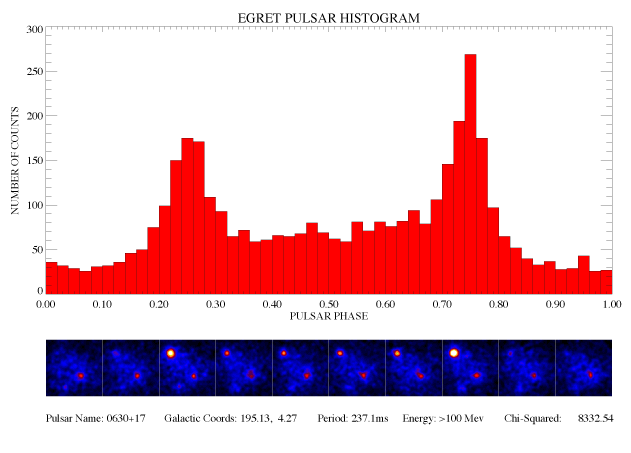Gamma-Ray Pulsars

Click image for larger view
Over 30 years ago, radio astronomers determined that pulsars are rotating neutron stars. Results from CGRO, and EGRET in particular, have now shown that for at least seven of these rotation-powered pulsars, their maximum luminosity is actually in the gamma-ray part of the spectrum, implying that these pulsars can efficiently accelerate particles to very high energies. Shown in the figure is the most remarkable of these gamma-ray pulsars, Geminga, a pulsar with little or no radio emission. Long known as an unidentified gamma-ray source, a detection of pulsed X-rays by ROSAT provided the needed clue. EGRET quickly determined the spin-down rate, allowing estimates of the age, magnetic field, and rate of energy loss. The upper panel shows the gamma-ray count rate as the neutron star makes one complete rotation (in 0.237 sec). The lower panel is a series of gamma-ray images of the Geminga region, showing the strong variation in brightness during the pulsar rotation (Geminga is the source at upper left). HST data give the distance to Geminga as 160 pc, allowing a calculation that about 3% of the total spin-down energy loss is seen as gamma rays. Although some other unidentified EGRET sources are likely to be radio-quiet pulsars, Geminga remains the only confirmed object of this type.
If you have a question about CGRO, please contact us via the Feedback form.

